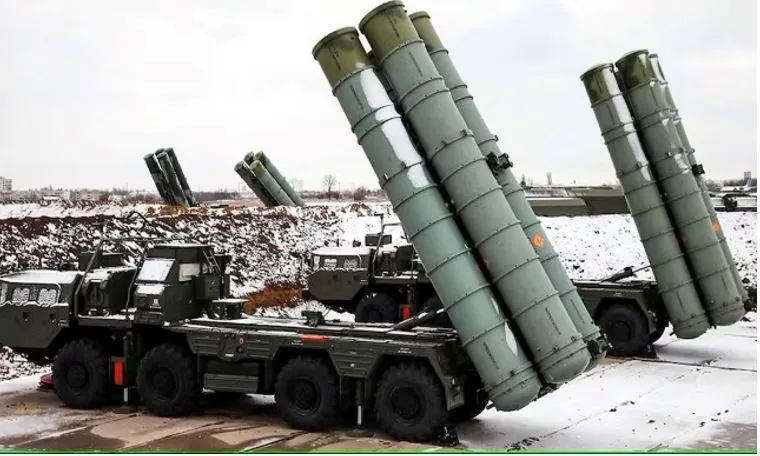

3rd June 2025 (13 Topics)
Mains Issues
Context
Assam faces its annual monsoon-triggered flood crisis, with lakhs of people affected across multiple districts due to river overflows, embankment failures, and climate-induced rainfall variability.
Assam’s Recurrent Flooding: A Convergence of Geography, Governance and Climate Risks
- Geographical Context
- Brahmaputra Floodplains: Assam lies in the floodplain of the Brahmaputra and Barak river systems, which overflow due to high rainfall and glacial melt.
- Flat Topography and Low Elevation: The state’s predominantly flat terrain offers poor natural drainage, making it highly susceptible to inundation during monsoons.
- Natural Drainage Constraints: The presence of oxbow lakes, wetlands, and siltation-prone channels further restricts water dispersal.
- Climate Change and Hydrometeorological Shocks
- Erratic Rainfall Patterns: Assam is increasingly witnessing sudden cloudbursts, localized extreme rainfall events, and out-of-season monsoon activity.
- Intensified Rainfall Events: The Indian Meteorological Department notes a 15–20% increase in extreme rainfall days across Northeast India, attributed to rising surface temperatures.
- Accelerated Himalayan Glacial Melt: This contributes additional discharge into the Brahmaputra basin, raising flood peaks during the monsoon.
- Infrastructure Deficits and Riverbank Erosion
- Weak Embankments and Outdated Designs: Over 500 embankments in Assam are decades old; many are prone to breaching under intense pressure.
- Unscientific River Management: Lack of basin-wide coordination in managing upstream discharges and inadequate real-time flood forecasting systems hinder mitigation.
- Erosion-Induced Displacement: The Brahmaputra erodes over 8,000 hectares annually, displacing an estimated 80,000 people, according to government data.
- Anthropogenic Pressures
- Deforestation in Catchment Areas: Mass deforestation in Arunachal Pradesh and Assam has reduced infiltration capacity, accelerating surface runoff into rivers.
- Encroachments on Floodplains: Unregulated urbanization, especially around Guwahati and Majuli, has narrowed natural drainage channels and increased waterlogging.
- Loss of Wetlands and Buffer Zones: Encroachment and pollution of wetlands like Deepor Beel reduce the region’s flood absorption capacity.
- Humanitarian Impact
- Scale of Displacement and Loss: In 2024, over 1.2 million people were impacted, with dozens of fatalities and destruction of crops across 25,000 hectares.
- Health and Livelihood Crises: Waterborne diseases, disrupted school calendars, and livestock losses severely affect socio-economic recovery post-flood.
- Inadequate Relief Infrastructure: Despite NDRF/SDRF presence, many relief camps lack sanitation, food supply chains, and medical aid, particularly in rural zones.
- Gaps in Governance and Policy
- Reactive Governance Model: Relief-centric responses overshadow long-term adaptation and risk reduction strategies.
- Lack of Institutional Coordination: Disjointed efforts between the Brahmaputra Board, State Water Resources Department, and Disaster Management Authority impede systemic response.
- Funding and Technical Bottlenecks: Delays in implementing World Bank-supported flood mitigation projects reveal administrative inertia and capacity constraints.
Way Forward:
- River Basin Management Approach: Establish an empowered Northeast River Basin Authority for coordinated flood and erosion control.
- Climate-Resilient Infrastructure: Upgrade embankments using geo-synthetic materials, and integrate early warning systems with satellite and Doppler radar data.
- Catchment Area Reforestation: Launch afforestation drives in upstream catchments to reduce runoff.
- Zoning Laws Enforcement: Implement strict land-use zoning along floodplains with punitive action against illegal encroachments.
- Community-Led Flood Preparedness: Expand community-based disaster preparedness under the SDRF with training, decentralised planning, and resource support.
PYQ:
|


Mains Issues
Context
A delegation of 10 MLAs from the Manipur Legislative Assembly recently met the State Governor demanding the formation of a viable government. Manipur has been under President’s Rule since February 2025 following a breakdown of constitutional machinery amid deteriorating security and political instability.
Manipur under President’s Rule: Constitutional Framework and Contemporary Challenges
- Understanding President’s Rule under Article 356
- Definition and Constitutional Provision: Article 356 empowers the President to take over a State government if it fails to function according to the Constitution.
- Imposition Process: Initiated on Governor’s report or otherwise; requires parliamentary approval within two months by simple majority.
- Duration and Extension: Initially six months; can be extended up to a maximum of three years in six-month increments with parliamentary approval.
- Historical Context and Misuse of Article 356
- Ambedkar’s Vision: Intended as a safeguard, hoped never to be invoked.
- Frequent Misuse: Historically used to dismiss elected State governments on political grounds rather than constitutional necessity.
- Judicial Interpretation and Safeguards
- Early Non-Interference: Courts initially refrained from interfering with the Centre’s decision.
- R. Bommai Judgment (1994): Landmark ruling restricting misuse; held that President’s Rule can only be imposed due to constitutional machinery breakdown, not mere law and order issues.
- Judicial Review: Imposition is subject to judicial scrutiny; legislative assemblies should not be dissolved before parliamentary approval.
- Subsequent Judgments: Courts struck down wrongful imposition in Bihar (2005), Uttarakhand (2016), and Arunachal Pradesh (2016).
- Current Scenario in Manipur
- Reasons for Imposition: Security deterioration and political developments led to President’s Rule in February 2025.
- Suspended Animation of Assembly: Assembly term till March 2027; not dissolved but kept suspended.
- Demand for Government Formation: MLAs pressing for a government that commands assembly and societal confidence given remaining 18 months of the term.
- Significance of Article 356 in India’s Federal Structure:
- Article 356 was conceived as a constitutional safety valve to protect states and the union, but its misuse undermined federalism. Post-S. R. Bommai, the judiciary has played a critical role in safeguarding constitutional norms and restricting arbitrary central intervention.
- Political and Security Context in Manipur:
- The imposition of President’s Rule in Manipur stems from serious security concerns amid ethnic tensions and political instability, illustrating the delicate balance between law and order and constitutional governance.
Constitutional and Political Challenges:
- Keeping the Assembly in suspended animation respects democratic principles by avoiding premature dissolution.
- However, prolonged President’s Rule risks democratic deficit and governance paralysis unless followed by timely government formation or fresh elections.
- Installation of a stable government with majority support is critical to restore normalcy and democratic functioning, respecting the socio-political diversity of Manipur.
Way Forward:
- The Union government and the Governor must facilitate the formation of a stable government reflecting assembly confidence to uphold democratic legitimacy.
- Careful monitoring of law and order to prevent further deterioration, coupled with inclusive political dialogue involving all stakeholders.
- Strengthening institutional mechanisms for conflict resolution and governance to prevent recurrence of constitutional breakdown.
- Ensuring adherence to judicial guidelines to prevent misuse of Article 356 in the future.
PYQ:Mains:
Prelims: Which of the following statements is/are correct about Article 356 of the Indian Constitution? (2022)
Which of the statements given above are correct?
2. Consider the following statements:
Which of the statements given above is/are correct?
|


Mains Issues
Context
The Punjab Cabinet, led by Chief Minister Bhagwant Mann, recently approved a new land pooling policy to be launched initially in 27 cities and towns across the state. This policy aims to curb the proliferation of over 14,000 illegal colonies and promote planned urbanization by involving landowners, promoters, and developers as active stakeholders, while safeguarding farmers’ interests through voluntary participation and fair compensation.
Policy Overview and Key Features of Punjab’s Land Pooling Initiative
Land Pooling Policy:
- Voluntary land contribution for integrated development, replacing forced acquisition with shared benefits.
Key Features of Punjab Land Pooling Policy:
- Voluntary Participation: Farmers and landowners voluntarily offer their land for development with no coercion or forced acquisition. Consent (No Objection Certificate) is mandatory before proceeding.
- Incentives to Landowners: For every acre contributed, the owner receives a 1,000 sq. yd. residential plot and a 200 sq. yd. commercial plot. Partial return of pooled land is allowed (e.g., contributing 9 acres returns 3 acres for group housing development).
- Compensation and Flexibility: Landowners receive ?30,000 per acre annually for up to three years during development. They retain the right to exit the scheme anytime, ensuring no long-term binding.
- Stakeholder Involvement: The policy includes landowners, private developers, and government authorities, ensuring balanced participation and investment.
- Curbing Illegal Colonies: The policy supports partial surrender and cancellation of colony licenses under the Punjab Apartment and Property Regulation Act (PAPRA), 1995, addressing rampant unauthorized urban settlements.
- Revenue Generation Measures: Revision and hike of External Development Charges (EDC), Change of Land Use (CLU) charges, and license fees have been approved, with an annual compounded increase of 10% from 2026 to boost state revenue.
Strengths:
- Empowers farmers with choice and benefits, mitigating exploitation risks.
- Encourages planned urban growth and infrastructure provision, reducing illegal colonies.
- Provides fiscal stability through revised charges and incentives for lump sum payments.
Challenges:
- Political opposition alleges possible disguised land acquisition and loss of fertile agricultural land.
- Successful implementation requires robust administrative machinery and transparent governance.
- Infrastructure capacity must meet increased urban demands to avoid poor-quality development.
Way Forward:
- Enhance awareness among landowners about benefits and safeguards.
- Establish transparent monitoring and grievance redressal mechanisms to build trust.
- Pilot the policy in select areas, evaluate, and scale up based on outcomes.
- Coordinate urban local bodies to ensure infrastructure matches the pace of development.
- Address opposition concerns by safeguarding agricultural interests and avoiding land alienation.
PYQ:Q. Land pooling schemes have the potential to resolve conflicts related to land acquisition and urban development.” Discuss with examples. (2020) |


Mains Issues
Context
India and Paraguay recently held high-level talks in New Delhi, resulting in enhanced cooperation agreements across sectors such as clean energy, green hydrogen, biofuels, and cybersecurity. This marks a significant step in strengthening bilateral relations and expanding economic, technological, and strategic ties between the two nations.
India and Paraguay Deepen Strategic Partnership in Clean Energy, Cybersecurity, and Trade
Historical Context and Diplomatic Ties:
- India and Paraguay established formal diplomatic relations in 1961. Over six decades, the relationship has matured into a warm and cooperative partnership, particularly within the framework of South-South cooperation. Paraguay, located in the heart of South America, holds strategic importance for India’s engagement with the Latin American region.
Expansion of Cooperation into New Sectors:
- The recent delegation-level talks between Prime Minister Narendra Modi and Paraguayan President Santiago Peña Palacios signify a renewed momentum in bilateral ties, focusing on emerging and critical sectors:
- Clean Energy and Sustainable Technologies: Both countries agreed to enhance cooperation in clean energy initiatives, including green hydrogen and biofuels. This aligns with India’s National Hydrogen Mission and its commitment under the Paris Agreement to increase the share of renewables in its energy mix. Paraguay’s interest in these sectors complements India’s expertise and investment capabilities.
- Cybersecurity and Combatting Organised Crime: Cybercrime, organised crime, and drug trafficking pose common challenges globally and in the Latin American context. Both India and Paraguay have committed to joint efforts in combating these threats, indicating enhanced intelligence sharing, capacity building, and law enforcement cooperation.
- Counterterrorism: Prime Minister Modi’s assertion of a united stand against terrorism underlines a shared security outlook and readiness to collaborate in global and regional counterterrorism frameworks.
Economic and Trade Linkages:
- India-Paraguay economic relations have witnessed gradual expansion, with significant Indian investments in Paraguay’s automobile and pharmaceutical sectors. Conversely, Paraguayan companies contribute to India’s economic ecosystem, fostering mutual economic growth.
- The establishment of a Joint Commission Mechanism (JCM) through a formal Memorandum of Understanding (MoU) institutionalises bilateral dialogue, facilitating regular review and expansion of cooperation across multiple sectors.
- Paraguay’s strategic role as a trading partner in South America offers India access to new markets, resources, and investment opportunities, while Indian technological and pharmaceutical strengths provide Paraguay with development avenues.
Diplomatic Engagements and Symbolism:
- The state visit included acts of cultural diplomacy, such as paying homage to key historical figures, alongside meetings with the highest constitutional authorities of the host country. These engagements serve to reinforce people-to-people connections and underscore the significance attributed to the bilateral partnership.
- Additionally, the scheduled visit to a major commercial and technological hub highlights the intent to strengthen ties in industry and technology, with a particular focus on emerging digital and manufacturing sectors.
Shared Multilateral and Global Perspectives: Both countries align on crucial international issues such as:
- United Nations reforms: Supporting efforts to make the UN more representative and effective, particularly advocating for permanent membership reforms in the Security Council.
- Climate Change and Renewable Energy: Committed to advancing global climate action, both nations recognize the need for sustainable development and clean energy transitions.
- Global Security: Coordinated positions on counterterrorism reinforce their bilateral and multilateral cooperation.
Strategic Significance:
- For India, strengthening ties with Paraguay helps diversify its diplomatic and economic partnerships in Latin America, a region historically less engaged compared to other continents. This supports India’s Act East and Latin America outreach policies, balancing global partnerships and expanding trade and investment horizons.
- For Paraguay, partnership with India offers access to technological know-how, investments, and support on global platforms, aiding its development priorities.
Way Forward:
- Enhance Institutional Cooperation: Implementation of the Joint Commission Mechanism should be expedited with clear timelines, sectoral focus groups, and monitoring frameworks.
- Promote Trade and Investment: Both countries should focus on reducing trade barriers, exploring Free Trade Agreement (FTA) possibilities, and encouraging mutual investments, especially in pharmaceuticals, IT, agriculture, and clean energy.
- Strengthen Security Collaboration: Develop joint task forces or working groups on cybercrime and counterterrorism, including knowledge exchange and capacity building.
- Sustainable Development and Climate Cooperation: Expand green hydrogen projects, renewable energy investments, and share best practices on climate resilience, given India’s leadership in solar energy and Paraguay’s hydropower capacity.
- Cultural and Educational Exchanges: Increase people-to-people contacts through scholarships, cultural festivals, and business delegations to deepen mutual understanding and goodwill.


Mains Issues
Context
Recent reports by the International Labour Organization and the World Bank highlight that heatwaves are causing significant labour productivity losses in India, estimated at $100 billion annually. Around 75% of India’s workforce, mainly informal and outdoor workers, are highly vulnerable to extreme heat, worsening with rising temperatures and urban heat effects
Heatwaves and Their Implications for India’s Labour Force and Economic Stability
Characterisation and Scope of Heatwaves in India
- Definition and seasonal prevalence (March to June)
- Regional vulnerability: Central, Northwest, Eastern, and Peninsular India
- Rising frequency and intensity over four decades (notable heatwaves in 2013, 2016, 2019, 2022, and 2024)
- Urban Heat Island Effect aggravated by rapid urbanisation, especially in Tier-II and Tier-III cities
Exposure to Heat Stress and its Impact on Labour Productivity
- Approximately 75% of the Indian workforce (380 million workers) engaged in heat-exposed occupations
- Vulnerable sectors: informal workers including construction labourers, farmers, street vendors, and small-scale businesses
- Quantified productivity losses: 40% reduction in earnings for informal workers during heatwaves; 2% decline in manufacturing output per 1°C temperature rise
- Consequences include increased absenteeism, reduced working hours, and deteriorating health conditions
Consequences for Agriculture and Rural Livelihoods
- Significant yield reductions in crops, notably a 5.2% decrease in wheat yield per 1°C temperature increase
- Heatwaves disrupt both farming and non-farming rural activities during peak summer months
- Vulnerability of livestock to combined heat and humidity stresses
- Compound effects when heatwaves coincide with droughts or food shortages
Governmental and Institutional Responses
- NDMA’s issuance of heatwave guidelines for workforce protection, encompassing education, work scheduling, hydration, and protective measures
- Implementation of state and municipal heat action plans with localized interventions such as provision of public water points, cooling shelters, and urban greening initiatives
- Example of Chennai’s incorporation of urban heat island data into city master planning
- Current focus largely on urban centres; rural areas face infrastructural deficits
Challenges
- Inadequate protection and cooling mechanisms for informal and outdoor workers
- Enforcement gaps in rural agricultural and livestock sectors
- Challenges in operationalising compensation and insurance schemes for heat-related work disruptions
Way Forward
- Strengthen and expand heat action plans with specific focus on rural outreach and vulnerable populations.
- Promote awareness and training programmes on heat risk mitigation for workers and employers.
- Enforce labour regulations mandating adequate rest, hydration, and protective clothing during heatwaves.
- Develop viable insurance and compensation schemes for workers affected by heat-induced work stoppages, ensuring accessibility and enforcement.
- Invest in urban planning strategies aimed at reducing heat island effects, including urban greening and water body augmentation.
- Encourage research and adoption of climate-resilient agricultural practices and technologies.
Heat Waves in IndiaDefinition and Role of Indian Meteorological Department (IMD):
Criteria for Declaring Heat Waves (IMD):
Conditions Favorable for Heat Wave Formation:
|


Prelims Articles
Context
The Government of India has notified detailed guidelines under the Scheme to Promote Manufacturing of Electric Passenger Cars in India. The scheme significantly lowers import duties on electric vehicles (EVs) for foreign manufacturers willing to invest in local EV production, aiming to boost domestic manufacturing capacity and attract global investment in the electric mobility sector.
Scheme Highlights:
- Import Duty Reduction: Foreign manufacturers are allowed to import up to 8,000 completely built-up (CBU) EVs per year at a reduced customs duty of 15% (currently 70-100%), provided they meet investment and manufacturing commitments.
- Minimum Vehicle Cost for Import: Only EVs with a minimum Cost-Insurance-Freight (CIF) value of $35,000 are eligible under this scheme.
- Investment Requirement: OEMs must commit a minimum investment of ?4,150 crore in India’s domestic EV manufacturing sector.
- Timeline and Localisation Norms:
- Manufacturers must begin domestic production within 3 years from approval.
- Local value addition must comply with phased manufacturing programme (PMP) guidelines over time.
- Eligibility for Brownfield Investment: Unlike the earlier draft policy, the final guidelines allow both greenfield and brownfield investments, after pushback from existing domestic manufacturers.
- Tenure of the Scheme: The concessional customs duty benefit will be available for 5 years from the date of approval.
Strategic Objectives:
- Encourage technology transfer, boost Make in India, and reduce import dependence.
- Improve affordability and accessibility of high-end EVs in the Indian market.
- Develop a robust EV ecosystem involving domestic manufacturing, R&D, and skilled employment.
Institutional Oversight:
- Administered by the Ministry of Heavy Industries (MHI).
- Performance benchmarks will be monitored annually to ensure compliance.
Electric Vehicles (EVs):
Types of EVs:
Advantages of EVs:
2024 EV Policy Highlights:
Major EV-Related Government Schemes:
|


Prelims Articles
Context
India’s Manufacturing Purchasing Managers' Index (PMI), compiled by S&P Global for HSBC, stood at 57.6 in May 2025, indicating continued expansion in the manufacturing sector, driven by strong domestic and export demand, record employment growth, and positive business confidence, despite moderate input cost inflation.
Purchasing Managers’ Index (PMI)
- Purchasing Managers’ Index (PMI) is an economic indicator derived from monthly surveys of private sector companies.
- Published by S&P Global for India.
- A PMI above 50 denotes expansion, while below 50 indicates contraction.
- There are two major PMIs:
- Manufacturing PMI
- Services PMI
Key 2025 Highlights:
- Manufacturing PMI = 57.6 (vs. 58.2 in April) ? sustained expansion.
- Driven by:
- Strong domestic & international demand
- Surge in export orders (Asia, Europe, West Asia, US)
- Record-high job creation since the survey began
- Input Cost Inflation (items like aluminium, cement, rubber, etc.) noted.
- Manufacturers raised output prices to protect margins.
- Business confidence remains high due to:
- Favourable domestic conditions
- Increased customer enquiries
- Effective marketing & advertising
- IIP Growth (April 2025):
- Overall: 7%
- Manufacturing: 4% (16/23 industry groups grew)


Prelims Articles
Context
The Reserve Bank of India (RBI) has proposed new norms to regulate gold loans, which has sparked debate due to their potential impact on borrowers and lenders. These norms aim to tighten the framework around loans against gold jewellery, a popular credit option for low-income borrowers who lack access to formal credit channels.
RBI’s Proposed Norms on Gold Loans - Key Concerns and Impact:
- Gold Loans: Gold loans are secured loans provided by banks and Non-Banking Financial Companies (NBFCs) against gold jewellery pledged as collateral. They are generally short-term and low-ticket loans, repaid within a few months.
- Borrower Profile: Gold loans are mostly availed by individuals and small borrowers who cannot access traditional credit facilities due to lack of formal documentation or credit history. This makes gold loans crucial for financial inclusion in rural and semi-urban India.
- Current RBI Regulations: RBI currently prohibits loans against primary gold/silver (newly mined) or financial assets backed by them (like ETFs or mutual funds), limiting gold loans to jewellery as collateral.
- Concerns Over Proposed Norms: New norms may include stricter valuation methods, loan-to-value ratios, or limits on tenure or interest rates, potentially making gold loans less accessible or affordable. This could affect millions relying on such credit for emergencies or livelihood.
- Significance: Gold loans form a substantial part of informal credit markets. Any regulatory change impacts credit availability, borrower vulnerability, and the broader financial ecosystem. Understanding RBI’s stance on balancing financial stability with inclusion is critical.


Prelims Articles
Context
Russia will deliver the remaining two units of the S-400 air defence system to India by 2025-26, completing a $5.43 billion deal signed in 2018. The system’s effective use in recent India-Pakistan clashes underscores its strategic value for India’s defence.
S-400 Missile System – India’s Sudarshan Chakra
Context and Background
- India acquired the S-400 Triumf air defence system from Russia through a contract signed in 2018 worth over Rs 35,000 crore.
- Despite potential US sanctions under CAATSA (Countering America’s Adversaries Through Sanctions Act), India proceeded with the deal.
- Three of the five contracted S-400 squadrons have been delivered, with the first unit delivered in 2021.
- The system was successfully used to intercept drone and missile attacks from Pakistan.
- India has deployed four S-400 squadrons at strategic locations: Pathankot, Rajasthan, Gujarat, and plans further deployment on the northeastern border.
Features of the S-400 Triumf System
- Type: Surface-to-Air Missile System (SAM) designed to counter multiple aerial threats: aircraft, ballistic missiles, cruise missiles, and UAVs.
- Components: Includes multifunctional radars, automated command centers, four missile types, and mobile launchers.
- Mobility: Mounted on trucks, enabling quick repositioning across different terrains.
Capabilities
- Range: Up to 400 km (maximum).
- Altitude: Can destroy targets flying between 10 meters to 30 km height.
- Target Tracking: Can track up to 80 targets simultaneously and engage 36 at a time.
- Speed: Intercepts targets moving at speeds up to 4.8 km/second (much faster than US Patriot missile system at 1.38 km/second).
- Deployment Speed: Can be deployed within 5 minutes (compared to Patriot’s 25 minutes).

Missile Types in the System
- 40N6: Long-range missile with 400 km range.
- 48N6: Medium-range missile with 250 km range.
- 9M96E2: Short to medium-range missile with 120 km range.
- 9M96E: Short-range missile with 40 km range.
Radar Systems
- 91N6E Big Bird: 3D phased-array radar for long-range target detection.
- 92N6E Grave Stone: Radar for medium and short-range target guidance.
- Integrated command system (55K6E) coordinates missile launchers and radar for quick threat response.
Comparative Superiority
- Faster deployment and interception speed compared to US Patriot and THAAD missile defence systems.
- Multi-dimensional missile variety creates layered air defence.
- US Patriot has a max range of 180 km, while S-400 extends to 400 km.
- THAAD is one-dimensional with only one missile type, max range 150-200 km.


Prelims Articles
Context
Researchers at CSIR-CCMB, Hyderabad, discovered the SHUKR gene that controls pollen development in flowering plants (eudicots). This finding sheds light on the rapid diversification of flowering plants about 125 million years ago, addressing Darwin’s “abominable mystery,” and has implications for improving plant resilience amid climate change.
Understanding the Evolutionary Significance and Agricultural Implications of the SHUKR Gene
- Evolution of Land Plants: Plants evolved from freshwater algae, gradually transitioning from aquatic to terrestrial habitats over 450 million years. This shift altered their life-cycles and reproductive strategies.
- Early land plants like mosses spend most of their lifecycle as gametophytes (haploid), with motile sperm swimming through water to fertilize eggs.
- Flowering plants (angiosperms), especially eudicots, have dominant sporophyte (diploid) phases, with enclosed gametophytes. Their male gametophytes develop as pollen, delivered by biotic or abiotic vectors.
- Life-cycle Dynamics:
- Gametophyte: haploid phase producing gametes (sperm/egg).
- Sporophyte: diploid phase producing spores.
- In flowering plants, sporophytes control pollen development, unlike in mosses where gametophyte development is independent.
- Discovery of SHUKR Gene:
- SHUKR is expressed in the sporophyte phase and regulates development of viable pollen in Arabidopsis thaliana (a model eudicot).
- Absence of SHUKR results in non-viable pollen, causing reproductive failure.
- SHUKR modulates F-box genes which manage protein turnover in pollen, essential for pollen maturation.
- Evolutionary Significance:
- SHUKR appeared about 125 million years ago in eudicots, coinciding with the rapid diversification of flowering plants.
- SHUKR and pollen-specific F-box genes are rapidly evolving, enabling plants to adapt pollen to diverse environmental stresses (heat, cold, humidity, aridity).
- This molecular innovation could explain the sudden evolutionary success and habitat expansion of flowering plants, addressing Darwin’s “abominable mystery.”
- Implications for Food Security and Climate Resilience:
- Flowering plants provide seeds that form the basis of human and animal food (cereals, pulses, oilseeds).
- Climate change-induced stresses affect pollen viability and plant reproduction, threatening food security.
- Understanding SHUKR’s role may enable development of crops with better resilience to environmental challenges through natural modulation of pollen traits.


Editorials
Context
The onset of the southwest monsoon has triggered widespread floods and landslides across several north-eastern States, affecting lakhs of people and causing significant casualties. Despite expectations of below-normal rainfall, the region’s high baseline precipitation levels continue to fuel extreme weather events. This highlights the urgent need for disaster-resilient infrastructure and coordinated policy planning.
Monsoon Devastation in Northeast India: A Recurring Crisis
Meteorological Pattern and Regional Rainfall Characteristics
- Bimodal Monsoon Arrival: The southwest monsoon enters the Northeast through the Bay of Bengal branch, often simultaneously with or shortly after the Arabian Sea branch reaches Kerala, bringing intense rains to the region.
- High Rainfall Base: Even in below-normal monsoon years, the Northeast receives significantly higher rainfall compared to other regions, sustaining a high risk of floods and landslides.
- Dual Rainfall Seasons: The region experiences a second, smaller monsoon from October to December, necessitating year-round disaster management strategies.
Humanitarian and Infrastructure Impact
- Widespread Flooding: Multiple rivers in Assam flowed above danger levels, affecting lakhs of people and severely disrupting daily life across numerous districts.
- Fatal Natural Hazards: Floods, flash floods, landslides, and lightning have caused multiple fatalities and injuries, severely straining emergency response systems.
- Transport and Tourism Disruption: Landslides blocked arterial roads in hilly regions, stranding large numbers of tourists and highlighting gaps in climate-resilient transport planning.
Policy Gaps and Structural Weaknesses
- Lagging Infrastructure Development: The region continues to suffer from underdeveloped infrastructure, due to both difficult terrain and inadequate investment over time.
- Year-Round Climate Exposure: The Northeast’s susceptibility to multiple rainfall seasons requires a comprehensive, long-term mitigation and adaptation strategy.
- Need for Institutional Coordination: A sustainable and region-specific disaster risk reduction framework must be devised jointly by State governments and the Centre to reduce annual loss of lives and property.
Practice Question:
Q. "Despite its ecological richness, the North-eastern region of India faces recurrent monsoon-related disasters. Examine the underlying causes and suggest a holistic approach to strengthen climate-resilient infrastructure and disaster governance in the region."


Editorials
Context
India and the U.S. are strengthening digital cooperation under the TRUST framework, with a strategic focus on secure subsea cable infrastructure. This aligns with the upcoming bilateral trade pact and Quad Summit, aiming to counter China’s digital footprint in the Indo-Pacific.
Strategic Importance of Subsea Cables in India-U.S. Digital Cooperation
Strategic Dimensions of Subsea Cable Infrastructure
- Critical Global Infrastructure: Subsea cables carry over 95% of global internet traffic, forming the physical foundation of international digital communications, cloud services, and cybersecurity.
- Geopolitical Relevance in Indo-Pacific: China’s Digital Silk Road is rapidly expanding undersea infrastructure across the Indo-Pacific. Trusted alternatives are essential to counter Beijing’s digital influence.
- India-U.S. Alignment through TRUST: The TRUST framework recognizes India’s role as a net security provider in the region and emphasizes collaborative investment in secure and resilient subsea cable networks.
India’s Current Capacity and Strategic Potential
- Infrastructure Gaps and Geographic Imbalance: India hosts 17 subsea cables, far fewer than Singapore’s 26, despite having a 11,098-km coastline. Moreover, 88% of cables converge at Mumbai, increasing risk concentration.
- Natural Advantages as a Digital Transit Hub: India is strategically located near key maritime chokepoints — Strait of Hormuz, Strait of Malacca, and Bab-el-Mandeb — making it a potential global subsea cable junction.
- Surging Domestic Demand: India’s bandwidth requirement is projected to grow at 38% CAGR (2021–2028) due to rising internet consumption and expanding data center infrastructure.
Policy Challenges and Strategic Recommendations
- Licensing and Clearance Bottlenecks: The deployment of undersea cables in India requires clearances from multiple ministries. Repair vessels face 3–5 months delays due to clearance procedures, creating commercial vulnerabilities.
- Need for Domestic Ecosystem Development: India currently depends on foreign-flagged repair ships based in Singapore and Dubai. There is an urgent need to build Indian-flagged cable repair ships and domestic depots.
- Strategic U.S. Investments in Indo-Pacific: The U.S. must enhance concessional financing, cybersecurity support, and encourage firms like Meta, which is investing in a 50,000-km subsea cable network connecting five continents via the Indian Ocean.
Practice Question:
Q. Discuss the strategic importance of subsea cable infrastructure in the context of India’s digital sovereignty and Indo-Pacific geopolitics. Evaluate the scope of India-U.S. collaboration under the TRUST framework in strengthening regional digital resilience


Editorials
Context
India has witnessed a gradual uptick in COVID-19 cases since mid-May 2025, with daily reported cases rising to a few hundred. Simultaneously, wastewater surveillance has indicated an increase in SARS-CoV-2 viral load. A similar trend is being observed in other Asian countries, prompting concerns about a potential new variant or resurgence of the virus.
Emerging Seasonal Trends of COVID-19 in India: A Rational Epidemiological Appraisal
Epidemiological Context and Variants
- Current Dominant Variant – JN.1 (Pirola): The JN.1 variant, a sub-lineage of Omicron (BA.1.529), is the dominant strain globally and in India, first detected in Luxembourg in August 2023 and in India since late 2023. It has shown no significant clinical deviation from earlier Omicron sub-lineages.
- Sub-Lineages and Mild Presentation: Sub-lineages like LF.7 and NB.1.8 have emerged from JN.1, but clinical severity remains mild with no surge in hospitalizations or mortality. Thus, no variant of concern has emerged since November 2021.
- Hybrid Immunity and Infection Dynamics: Despite population-level hybrid immunity from vaccines and natural infections, reinfections are possible. However, immunity effectively prevents severe disease, underscoring waning antibodies but robust memory cell responses.
Reasons Behind the Uptick
- Seasonality of Respiratory Viruses: Respiratory viruses, including SARS-CoV-2, exhibit seasonal trends influenced by humidity, temperature, and crowding. Data from India indicate a cyclical surge every 8–10 months since the January 2022 Omicron wave.
- Genomic Instability of RNA Viruses: SARS-CoV-2, being an RNA virus, naturally undergoes frequent mutations, contributing to minor sub-variant emergence. However, these changes have not led to increased virulence or hospitalizations.
- Enhanced Testing and Surveillance Effect: The current surge is partially attributed to increased COVID-19 testing due to regional case upticks in countries like Singapore and Thailand, leading to greater detection rather than an actual surge in symptomatic disease.
Public Health Implications and Response Strategy
- Limited Epidemiological Significance of 'Active Cases': The concept of 'active cases' is outdated, as individuals now become non-infectious within 1–2 days due to existing immunity. Continuing to use this metric distorts the real public health threat.
- Comparative Disease Burden Perspective: COVID-19 causes 200–300 daily cases versus 8,000 TB cases, 900 TB deaths, and air pollution-related respiratory mortality in India. The overall health burden of COVID-19 is currently minor.
- Vaccination Policy and Immunological Adequacy: No additional vaccine dose is recommended, as the population has broad hybrid immunity and no variant of concern necessitates booster campaigns. Focus should shift to preventing comorbidities and vaccinating high-risk groups for other respiratory infections.
Practice Question:
Q. “India’s current COVID-19 surveillance and response strategy must evolve from pandemic mode to endemic management. In light of emerging seasonal patterns and hybrid immunity, critically analyse the need for recalibrated public health metrics and communication strategies.”


